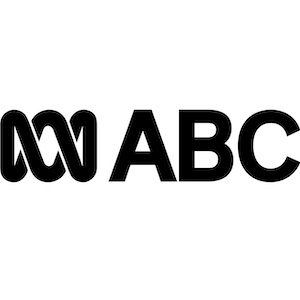Mike Seccombe, The Saturday Paper, Dec 22 2018
There can be few tasks in the life of a political journalist as tediously demanding as the writing up of opinion polls. Most of the time it involves the conjuring of an illusion of news.
In the vast majority of those surveys of electoral support, nothing really changes. Maybe the Coalition or Labor has gone up by a percentage point, maybe the preferred prime minister measure has bounced a little one way or the other.
But any political journalist worth their pay knows this is irrelevant. Those who produce these published polls – Ipsos in the Fairfax papers, YouGov Galaxy, which does Newspoll for the Murdoch papers, Essential in Guardian Australia, and various other polling outfits – always apply the caveat of a 2.5 to 3 per cent margin of error in the sampling. Any movement smaller than that is probably statistical static. In this country, every fortnight, it is also front-page news.
Sure, once in a very long while something dramatic happens, as it did in August this year when the right-wing coup in the Liberal Party saw Malcolm Turnbull dumped from the prime ministership and Scott Morrison installed in his place. Then the polls swung wildly. By Newspoll’s measure, the two-party preferred margin went from two points (51-49) in favour of Labor in its poll published on August 12, to 12 points (56-44) on August 26.
Now, that’s a story. But it was very much the exception. At best, most polls in the various media confirm longer-term trends.
Yet they have become an unhealthy obsession in Australian politics. To an impoverished media, says Greens leader Richard Di Natale, they have become “a substitute for journalism”. The undue emphasis placed on them, says ALP president and former treasurer Wayne Swan, “devalues politics” and threatens to become a substitute for leadership.
Polling results have been a significant factor in the demise of Australia’s past four prime ministers. In two cases, Kevin Rudd’s and Tony Abbott’s, there were other major issues, too, relating to their style of leadership. But the other two, Julia Gillard and Malcolm Turnbull, were cut down purely and simply because of poor polling.
Used properly, surveys of public opinion can be a useful tool. But they can also be very dangerous. As Di Natale says: “They have how been weaponised, by people across the political divide, even by people within the same party. They have become a big part of the problem in our democracy.”
Polls come in different kinds. Most familiar are the regular surveys that appear in the print media, telling us which party is ahead in the race to the next election. There also are issues polls that seek to measure, and often to influence, opinion on one subject or another. Both have their problems.
Let’s start with the political polls, which are reported in a way that bemuses and alarms people who actually understand the uses and abuses of public opinion sampling.
“Newspoll comes out and shows Labor’s gone up 1 per cent and the government’s gone down 1 per cent, and it’s totally within their margin of error and it means they got the same result as last time,” says Professor Andrew Markus, of Monash University.
“But it generates headlines and has everyone running around Parliament House saying, ‘What are we going to do?’
“It’s extremely destabilising. It feeds the 24-hour news cycle, and people hang out for it. But it is not a qualitative measure of what the government is doing.”
That is to say, while these polls indicate whether a government is popular, they do not give any clue as to why.
Therein lies a problem: when the numbers don’t mean much, meaning must be attached to them. As the example of the recent Liberal coup shows, that can lead to disaster.
The current government lost 38 consecutive Newspolls under Turnbull’s leadership. The meaning attached to this by the right wing of the government was that the fault lay with the leader who, they argued, had failed to appeal to the conservative “base”.
Only after the leadership change has it become apparent to all but the most deluded that the fault lay less with the leader than the party.
Politicians aren’t the only ones apt to interpret – or misinterpret – the poll numbers to suit their agendas. So do all manner of people with vested interests, including the news organisations that publish them.
The primary agenda of the media is commercial. They are selling a product.
“When a media outlet commissions a poll, they don’t do it as an intellectual pursuit, they want to get a strong story out of it,” says independent polling analyst Andrew Catsaras.
Ironically, it tends to be the case that the more static the poll numbers, the more reporters are apt to push what Catsaras calls “the bounds of reasonableness” in their efforts to find significance in the numbers.
If, for example, the headline number – voting intention – hasn’t moved, it is likely that the story will emphasise some other measure, like the leader’s popularity.
“But,” says Catsaras, “the leader’s ratings don’t mean much, as they already are factored into the voting intention. The primary vote is the most important thing, and from there the calculation of the two-party preferred vote, which by and large is pretty accurate. But the other measures [leader’s approval, preferred prime minister] are basically window-dressing.”
Apart from the fact the newspapers “like to make it a beauty contest”, he says, some also push a political agenda.
“If their party isn’t doing too well, they will emphasise the positive, the thing that suits them. The stuff you read in Fairfax is far more measured than what you read in News. News is almost always pushing a political barrow, which is the conservative cause.
“The classic example was 2007, when Labor was absolutely hammering the Coalition under Howard in the two-party preferred vote, and The Australian … grasped on to preferred prime minister, and wrote a series of stories about how Howard was coming back. It was bullshit. At that time, various bloggers including myself and Greg Jericho wrote about it.”
The Australian responded in print with a vigorous defence of its focus on the prime minister’s performance, but come the election Howard’s government not only lost, Howard himself became only the second prime minister in history to lose his seat.
Catsaras stresses that the bias he sees is not the fault of the pollsters.
“These high-quality outfits – Galaxy, Newspoll, Ipsos, Essential, ReachTEL – aren’t doing anything wrong. The problem lies in the interpretation of the findings,” he says.
And while the Murdoch media are the worst when it comes to spinning the data, he says, “their pollster, Newspoll, is still the best”.
David Briggs, managing director of YouGov Galaxy, which now produces Newspoll, thanks Catsaras for his endorsement, but also strongly disagrees about the importance of the preferred prime minister measure.
“It is absolutely relevant,” he says. “When you look back over the past 30 years, you find the leader of the Opposition has got to be either ahead of the prime minister, or very close, to win. There hasn’t been a time when, at the election, the existing prime minister has had a significant lead over the leader of the Opposition and lost the election.”
He does agree with Catsaras, however, that voting intention is the most important number. He also agrees with Catsaras’s puzzlement at the current state of the preferred prime minister measures across the various polls, which consistently show Bill Shorten as unpopular.
“It’s not as if people don’t know him after five years. It’s a mystery why he hasn’t done better,” Briggs says.
Shorten has brought his formerly fractured party together, is tactically smart, has put forward bold and mostly popular policy ideas and is strong on detail.
Why don’t people like him? Yes, he played a role in bringing down previous leaders of the party. But so did Malcolm Turnbull, and the public liked him. Yes, Shorten has strong trade union links, but Bob Hawke was leader of the Australian Council of Trade Unions before he became Labor leader – and also knifed Bill Hayden, and was a former womaniser and heavy drinker – and the public loved him.
Off the record, one pollster confesses he could put it down to only one thing: “It’s the way he looks and sounds.”
The point is that modern politics and media encourage superficial judgements. Contemporary politicians get a grab on TV or radio for a couple of seconds if they are lucky, and the result is that it’s not what they say that impresses but the way they look and sound while saying it. And once a negative perception takes hold, it is constantly reinforced in the reporting of the polls.
It is not only the party polling that encourages superficial judgements. We also are deluged with issues polls. In some respects, they are even more dubious than polls of voting intention. As Andrew Markus notes, pollsters have had a long time to develop sampling and weighting formulas for political polls, and to refine them by comparison with actual election results. That is less true of issues polls. The issues about which respondents are being asked also are often far more nuanced than the simple matter of choosing one political party or the other.
For example, a recent Fairfax–Ipsos poll surveyed attitudes on climate change and energy security. It asked respondents whether they thought government should prioritise (a) reducing household power bills, (b) reducing carbon emissions, or (c) reducing the risk of blackouts.
Overall, responses were 47, 39 and 13, respectively. But where was the option for people who understand the reality that renewable energy is now cheaper, cleaner and, if done right, more reliable than power generated by fossil fuel? Where was option (d) “I believe all three goals can be achieved simultaneously”?
When I put it to Ipsos director Jessica Elgood, who runs the polling program for Fairfax, that the poll had presented an essentially false choice, she conceded the difficulty of getting a meaningful response from a single question.
“When you have complex issues like that, you need either a far longer interview, where you can spend 20 or 30 minutes taking people through the various elements of the topic, or a focus group or workshop discussing the subtleties,” she said.
And while her organisation, like other big polling outfits, does such in-depth analysis of opinion for some clients, including government departments, “they are not the kind of surveys that generally make it onto the front pages of newspapers”.
She claimed, nonetheless, that even a single question provided “insight”. But much depends on how the question is asked.
All too often, says Wayne Swan, issues polls are commissioned by those with vested interests, and the questions asked are not designed to measure opinion but to influence it.
“If, for example, you put the question on capital gains tax reform by asking people if they are in favour of reform to take away huge tax breaks from people on high incomes, they’ll say, ‘Yeah, we’re in favour of that,’ ” he says. “If you ask if they are in favour of tax reform that will tank the property market, you’ll get a different result.”
Even when those asking the question have the best of intentions, the framing of issues is hard.
A strong illustration of this point can be seen in attempts over recent years by the Lowy Institute to measure public attitudes to Australia’s foreign aid budget.
In 2017, the Lowy poll question told respondents that Australia invested $3.8 billion in overseas aid, and asked if they thought that was too little, too much or about right. Only 22 per cent thought we should spend more.
The government seized on this result to justify massive cuts it had made in the area.
This year, however, Lowy posed the question another way, asking people what proportion of the federal budget they thought was spent on aid, and what proportion should be spent on it. On average, they guessed actual spending to be 14 per cent of the budget, and thought it should be reduced to 10 per cent.
In reality, aid spending makes up only 0.8 per cent of the budget.
What insight is gained from this? That Australians are stingy, or generous, or just confused by large numbers? Elgood suggests the third.
Economic matters in particular do not lend themselves to meaningful polling, as was exemplified in a recent Essential poll on negative gearing. The very long question first sought to explain what negative gearing was, then asked if respondents thought proposed changes would drive house prices up or down or have no effect on them. The biggest response was “don’t know”, followed by “no effect”, which was likely a shy way of saying the same thing. Of the minority who had an opinion one way or the other, it is likely most were simply reflecting their pre-existing political allegiance.
But it’s not just economics. “A lot of issues are far too complex for the average voter,” says Briggs, “and that’s why we elect representatives to make those decisions for us.”
The concern is, however, that as public trust in our elected representatives declines – indeed, trust in institutions and expertise in general – polls become part of an amplification system for ignorance.
A 2017 Ipsos report, “Perils of Perception”, highlighted just how wrong people are, across 38 countries, about a wide variety of issues.
Almost everywhere, for example, people were convinced the murder rate was going up, whereas it had increased significantly in only two countries – Mexico and Peru. In Australia, murders declined 47 per cent between 2000 and 2017, but only 17 per cent of respondents thought this was the case. Twice as many wrongly thought the opposite.
The report showed people greatly overestimated the incidence of various things they feared, from the number of deaths due to terrorism to the criminal proclivities of immigrants. In the former, the figure is hugely down, globally, in the 15 years after September 11, 2001, compared with the 15 years before 2000, and in Australia down from seven to six. In the latter, Australians thought migrants made up 40 per cent of the prison population, more than twice the actual proportion.
The subheading of the Ipsos report was “Things are not as bad as they seem”. But some media and politicians find advantage in emphasising negative perceptions instead of data-based reality. Thus, for example, we continue to see them running law and order campaigns despite falling crime rates.
Last month, the Fairfax papers provided a classic example of a divisive, poll-based beat-up. The subject was the level of Muslim immigration.
“A special Fairfax–Ipsos survey finds only 14 per cent of voters support an increase in the number of immigrants from Muslim countries while 35 per cent believe the intake should stay the same. But another 46 per cent believe the intake should be reduced a lot or a little…” it read.
The takeout message seemed clear: almost half of voters were concerned about bringing more Muslims into the country. But it was misleading by virtue of omission, as Michael Pascoe pointed out in an excoriating piece for The New Daily.
Another Fairfax–Ipsos poll, published only the previous month and written up by the same reporter, found 45 per cent of respondents wanted all immigration cut either a lot or a little.
As Pascoe noted, the difference between the two results – one percentage point – was within the margin of error. He flayed the “once-venerable Fairfax mastheads” for having “ventured a little further down the road of clickbait and populism, joining the Murdoch newspapers with a sectarian beat-up”.
Andrew Markus, who writes the annual Scanlon Foundation “Mapping Social Cohesion” report, poses the obvious question: “What, then, were those people responding to?”
The Scanlon survey, released last week, asked 77 questions, including a detailed series on immigration, using a very large sample of respondents and a mixture of survey techniques – 1500 phone interviews and 2260 online surveys.
Says Markus: “We found a heightened negativity towards immigration. But it was about perceived overcrowding, perceived lack of government planning, perceived impact on house prices, and not to do with the ideal of immigration for Australia, not to do with multiculturalism, not to do with cultural diversity.”
Certainly, Scanlon found negative attitudes towards Muslims – about 25 per cent in the phone polls and 40 per cent in the self-administered online polls. Still, only 18 per cent of phone respondents and 29 per cent online favoured a religiously discriminatory immigration policy. That is, about half the number cited in the Fairfax beat-up. And the negative views were heavily concentrated among conservative voters: 26-35 for Coalition supporters and 56-59 One Nation.
But that is not the real point here. The point is that polls only measure perceptions, and are only useful to the extent that they (a) fairly frame the issue, (b) reflect informed opinion, and (c) are accurately and soberly reported.
Much of the time, the published polls fail on one or more of these grounds. Often, it is all three.
At best, polling gives a useful insight into the broad orientation of the popular opinion, which is often uninformed, even prejudiced.
The test for the media, says Richard Di Natale, is whether they simply record that opinion or take the harder option of ferreting out the facts. For politicians, he says, the test is whether they seek “to lead and shape the national debate, or whether they sit back and be passive actors in agendas run by other people”.
“You can either test opinion and respond to it, or you can shape and lead it. That takes a bit of vision and courage, but that’s what leadership is.”
According to Wayne Swan, you cannot govern effectively by reference to opinion polls. “If you do that,” he says, “then you are proceeding by looking in the rear-vision mirror. Social progress is only ever achieved by persuading people to move their opinions over time. Opinion polls can be a guide for action but should not be the determining factor. If you relied just on opinion polls, none of the great reforms would ever have been made.”
Di Natale and Swan are both right. Poll-driven populism is undermining our trust in politics, even in democracy itself. Faith in government is at record lows. The irony is, we know this because all the polls measure it, even as they contribute to it.
This article was first published in the print edition of The Saturday Paper on Dec 22, 2018 as “How polling is wrecking democracy”. Online version: https://www.thesaturdaypaper.com.au/news/politics/2018/12/22/how-polling-wrecking-democracy/15453972007324




